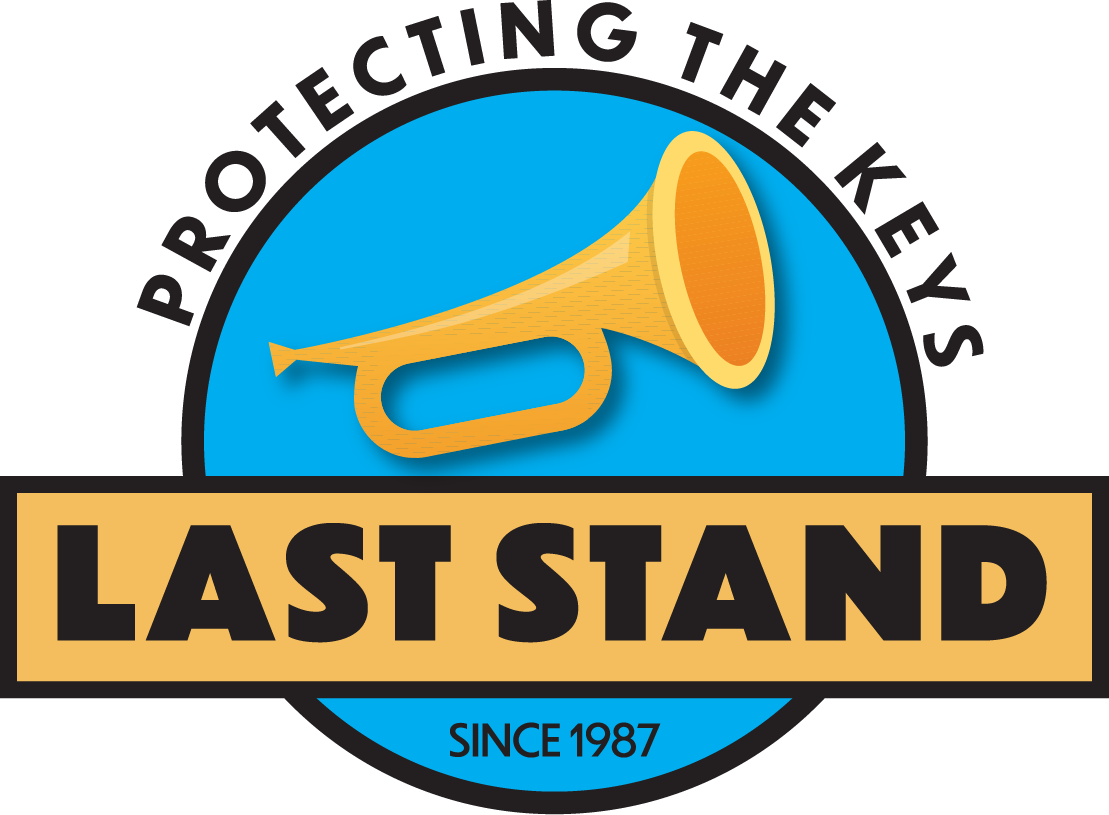Protecting Habitat Integrity: Opposing the Rescission of "Harm" Definition Under ESA
May 13, 2025
Public Comments Processing
Attn: FWS-HQ-ES-2025-0034
U.S. Fish and Wildlife Service
MS: PRB/3W
5275 Leesburg Pike
Falls Church, VA 22041-3803
To Whom It May Concern:
Re: Public Comment Opposing the Rescission of the Definition of "Harm" Under the Endangered Species Act (ESA) Docket No. FWS-HQ-ES-2025-0034
Last Stand of the Florida Keys is a non-profit organization established to preserve the Florida Keys and ensure a sustainable future for all. We advocate for promoting, preserving, and protecting the quality of life in the Florida Keys, with particular emphasis on the natural environment. For over 30 years, Last Stand has worked to safeguard vulnerable marine habitats, endangered species, and the health of our ecosystems. This proposed change would dangerously weaken the ESA’s ability to protect species that rely on intact, functioning habitats for survival.
1. Habitat Destruction Is Harm
The current regulatory definition recognizes that “harm” includes significant habitat modification that injures or kills wildlife by impairing essential behaviors such as breeding, feeding, and sheltering. This interpretation is both scientifically valid and ecologically necessary. In the Florida Keys, species like the Key deer, sea turtles, and manatees are threatened not only by direct human actions but also by the slow erosion of habitat integrity due to development, pollution, and climate change. Ignoring these indirect yet lethal threats is a step backward in conservation science.
2. The Statutory Language Supports a Broader Interpretation
The proposed rescission rests on an overly narrow reading of the word "take." However, the ESA was crafted to be broad and preventative, not reactionary. The Supreme Court’s 1995 ruling in Babbitt v. Sweet Home upheld the existing definition of "harm" as a permissible interpretation of Congressional intent. With Chevron overturned, the agencies must now interpret statutes by their best meaning—but that does not compel reverting to an outdated, limited view of what constitutes "harm." The ESA’s purpose is to prevent extinction, not just to penalize direct acts of violence against wildlife.
3. Real-World Impact: Undermining Habitat-Based Protections
Removing the definition of “harm” would severely limit the enforcement of habitat protections vital for species already on the brink. In the Keys, mangroves, seagrass beds, and coral reefs are essential nurseries and feeding grounds. Development that degrades these habitats can destroy a species’ ability to survive without ever “touching” an individual animal. Under this proposed rule, many destructive activities would fall outside the ESA’s reach, even though their consequences are biologically identical to direct harm.
4. Contrary to Conservation Goals and Public Trust
The proposal would roll back decades of environmental progress and undermine public trust in the federal commitment to conservation. It also conveys that industry convenience is prioritized over ecological science and legal precedent. In a time of accelerating biodiversity loss, we must reinforce—not weaken—protections for the natural systems we all rely on.
5. Conclusion and Request
We urge the U.S. Fish and Wildlife Service and the National Marine Fisheries Service to withdraw this proposed rule. The current definition of “harm” ensures that the ESA remains a proactive and effective tool for protecting imperiled species. Removing this definition would create regulatory uncertainty, increase litigation, and gravely endanger species whose survival depends on protecting their habitats.
Respectfully submitted,
The Last Stand Board of Directors
